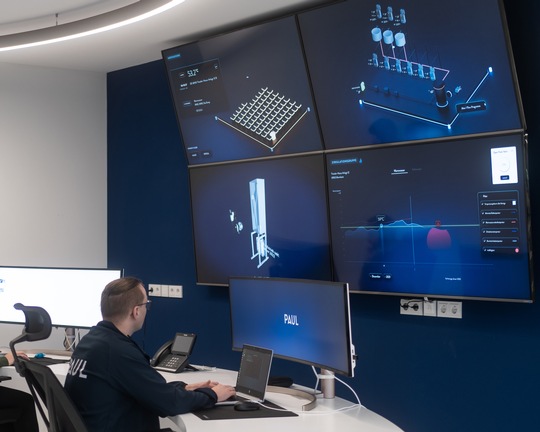European climate targets are ambitious. The EU taxonomy is a reality. Significant CO2 reduction is essential. With a share of 40% of total CO2 emissions, building management plays a crucial role. PAUL is paying particular attention to existing properties and will save around 50,000 tons of CO2 over a ten-year period.
The focus of CO2 reduction in buildings is still very much on insulation, photovoltaics and heating technology. Here, the savings potential has now been largely exhausted. For a long time, the energy consumption caused by drinking water systems and heating networks went unnoticed. This control system operates intelligent networks and raises the energy saving potentials there. This principle already saves up to 20% energy and thus CO2.
Popular with housing companies
The GmbH has been working on digitalization and the creation of smart grids in buildings since 2017. More than 150,000 housing units are already connected and maintained via the control system. In 2021, well-known players in the housing industry have newly placed their bets on it or expanded their involvement. These include real estate investors and cooperatives as well as private and municipal housing companies. In total, this adds up to CO2 savings of 50,000 tons over the total term.
“The wide range of possibilities offered by PAUL are quickly convincing. Especially in times of climate change and the topic of EU taxonomy, many of our customers see the potential in how they can make their buildings uncomplicatedly taxonomy-compliant. In addition to the technical details, we also provide support in all administrative matters. This is well received and is the basis for a long-term, trusting collaboration.”
- Maiko Dufner, Managing Director
An example of the drinking water plant
With its AI-based process, the control system ensures a constant water temperature at the TWA that is above 55° Celsius, thus preventing bacterial growth, especially of legionella. It also ensures permanent hydraulic balancing, which ensures constant movement of the water. This reduces CO2 emissions by a relevant amount. Everything is controlled from the control station. Here, the data is analyzed and, if necessary, measures are initiated. A digital twin of the drinking water system is created. The control system documents all data. This ensures legal certainty vis-à-vis authorities, which is a great benefit for operators of residential complexes.
Maiko Dufner, Managing Director says: “Less energy required also means lower costs. In addition, the control system still holds enormous potential for making buildings CO2 neutral. In this way, we create a win-win-win situation for operators, residents and the environment.”

















